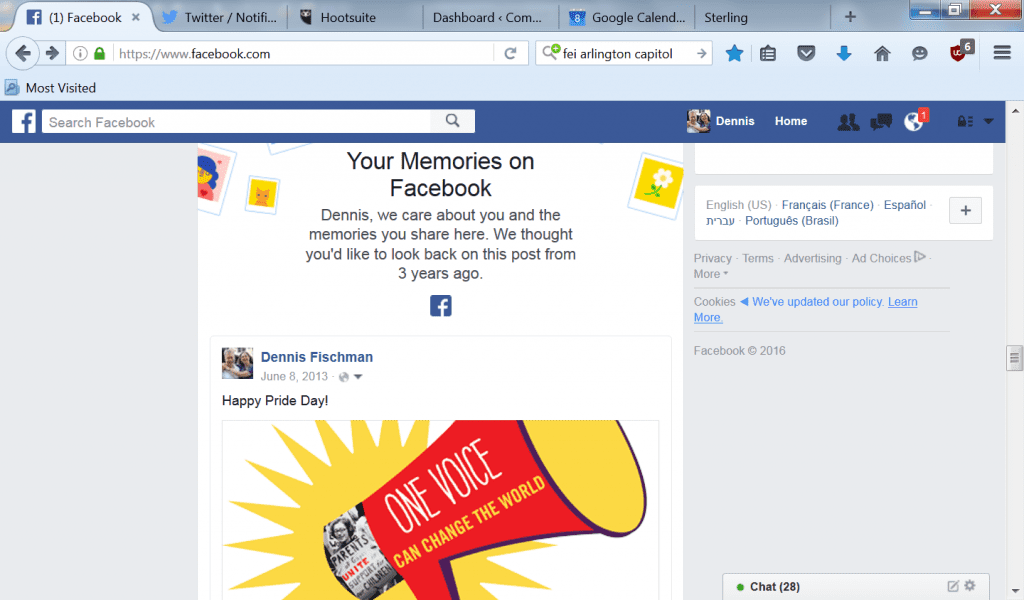 We live in a world where innovation and disruption are considered heroic.
We live in a world where innovation and disruption are considered heroic.
That’s certainly the culture of corporate enterprise. Nonprofits talk the talk, too. Even those nonprofits that warn against Bright Shiny Object Syndrome worry that if they miss the next new trend–whether it’s recurring giving or artificial intelligence–someday, they’ll regret it.
But are we worried about the right things?
Should we first be worried about making sure that we are doing, is working? (And perhaps, making it work a little better?) Share on XScheduled maintenance for your nonprofit
 I recently reviewed the website of a nonprofit organization. In some ways, it was gorgeous. The photos were attractive. The design performed just as well on a mobile device as on a desktop computer.
I recently reviewed the website of a nonprofit organization. In some ways, it was gorgeous. The photos were attractive. The design performed just as well on a mobile device as on a desktop computer.
But–all the external links were broken.
The program descriptions were two years out of date.
And the financial report (which is crucial for closing the deal with institutional funders and sophisticated donors) was a PDF dating back to 2014!
Innovation and disruption are not going to help this nonprofit.
This organization should not be launching a new crowdfunding campaign, or adding a chatbot to its Facebook page. It should be focusing on its website–which has been a basic tool for nonprofit communications and fundraising since the turn of this century.
It should also be coming up with a system for making sure its website stays useful to donors and prospects. Whose responsibility will that be? How often must they check links and update documents? When will the nonprofit plan to redesign the site?
You wouldn’t wait to take your car into the shop until the engine seized up. You take it in for regularly scheduled maintenance and checkups. Please, do the same with your nonprofit. Like Ms. Marvel or Superman, your quiet work will hide your real identity. You’re a hero.
Where to improve first
Just like your website, in 2019 a Facebook page is a basic tool of your organization. But even in 2019, I stand by what I wrote on John Haydon’s blog in 2013: there are lots of things even more basic than Facebook.
Your nonprofit should not be using Facebook. Here are ten reasons why.
1. Your website sucks
A Facebook page should make people head to your website to see more about you. But if your website is unattractive, hard to read or navigate, and impossible to view on a mobile device, then you don’t want to send people there.
2. You don’t have a blog
So they came to your website once. Why should they come back? A blog gives people a different reason to visit, each time you post. If you’re not blogging, why are you bothering with Facebook?
3. You post stuff that nobody wants to see
Who cares how many people your nonprofit served or what awards your Executive Director won? If you’re not telling people how their donations made a tangible difference in one person’s life, you’re talking to yourself.
4. You don’t capture people’s email addresses
Remember, you don’t own Facebook. Zuckerberg does. You own the email addresses that people have given you permission to use. First, make sure that you have ways to get that permission.
5. You don’t have something concrete to offer
Why would people give you their email addresses when they get so much email already? Only because you give them something even more valuable in exchange: information they’re eager to have. What can you offer?
6. Your contact management system is broken
When you get those emails, are you still storing them in Excel? Or are you recording them in a database that lets you send each person the message that matters to them, and keep track of your relationship with them?
7. Your customer service sends the wrong message
What you do speaks louder than what you post. Do you answer the phone, respond to voicemail and email, and greet walk-ins with courtesy and professionalism? Do they get the help they are seeking?
8. You don’t want to devote enough time
Heather Mansfield estimates that to participate effectively in just one social medium like Facebook, it takes seven hours a week. Are you trying to do it in an hour a week? Then you’re wasting that hour. Don’t bother.
9. You don’t want to spend any money
Facebook is making it harder and harder to reach even the people who already know you and like you without paying for the privilege. You don’t need megabucks, but have a budget for boosting your Page and your posts.
10. You don’t have a communications strategy
“Outreach,” “visibility,” and “awareness” are not good reasons to be on Facebook. Do you know who you’re trying to reach, for what purpose, and what they would do if you engaged with them successfully?
Small improvements, large results
Do these ten points sound like you? The good news is that with a little help, you can fix each and every one of them… and raise a lot of money as a result. Including on Facebook.
But see, these improvements are not bright shiny objects. They’re not innovation, and forget about disruption.
Old and improved beats new and improved nine times out of ten. Make sure you maintain and improve what your nonprofit does already. Share on X

